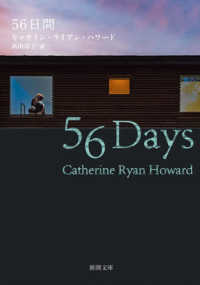- ホーム
- > 洋書
- > 英文書
- > Biography / Autobiography
Full Description
Born during the final years of the Kiowa, Comanche, and Apache Reservation, Charles E. Apekaum, grandson of Kiowa chief Stumbling Bear, served as the principal interpreter for the Santa Fe Laboratory of Anthropology field expedition in 1935. Educated, bilingual, and world traveled, Apekaum's services as a translator were sought by anyone who dealt with the Kiowa Indian Agency personnel, politicians, and scholars.
The following year, Apekaum traveled throughout Oklahoma with anthropologist Weston La Barre and ethnobotanist Richard Evans Schultes, serving as their liaison as they documented the peyote religion. During off days, Apekaum narrated his life story to La Barre, recounting the final days of the reservation, allotment, the early days of Anadarko, Oklahoma, his seventeen years attending boarding schools, service in the navy during World War I and then as a state game warden, his work translating for politicians, and his involvement in the Native American Church. La Barre never published the manuscript, which contains rich details about intertribal variants of the sacred peyote rite as well as about Apekaum's life experience.
In Autobiography of a Kiowa Indian Benjamin R. Kracht presents Apekaum's autobiography for the first time. This eyewitness account is an important addition to Native American life narratives and the reconstruction of Kiowa cultural, social, and religious life in the late nineteenth and early twentieth centuries in the southern Great Plains.
Contents
List of Illustrations
Introduction Significance
Editing Preface by Weston La Barre
Acknowledgments
1. Family Life: Childhood to Adulthood Overview
Narrative 2. School Days, Navy Life, and Politics Overview
School Days
Navy Life
Politics 3. Religion Overview
Peyotism vs. Christian Beliefs
Early Peyote Use among the Kiowas
Peyote Doctoring, Visions, and Witching
Peyotism among the Comanches, Caddos, Osages, and Other Tribes
Peyote Songs
Mixed-Blood and Non-Indian Peyotists
Apekaum and the Native American Church
Peyote and the Ten Medicines Notes
References
Index







